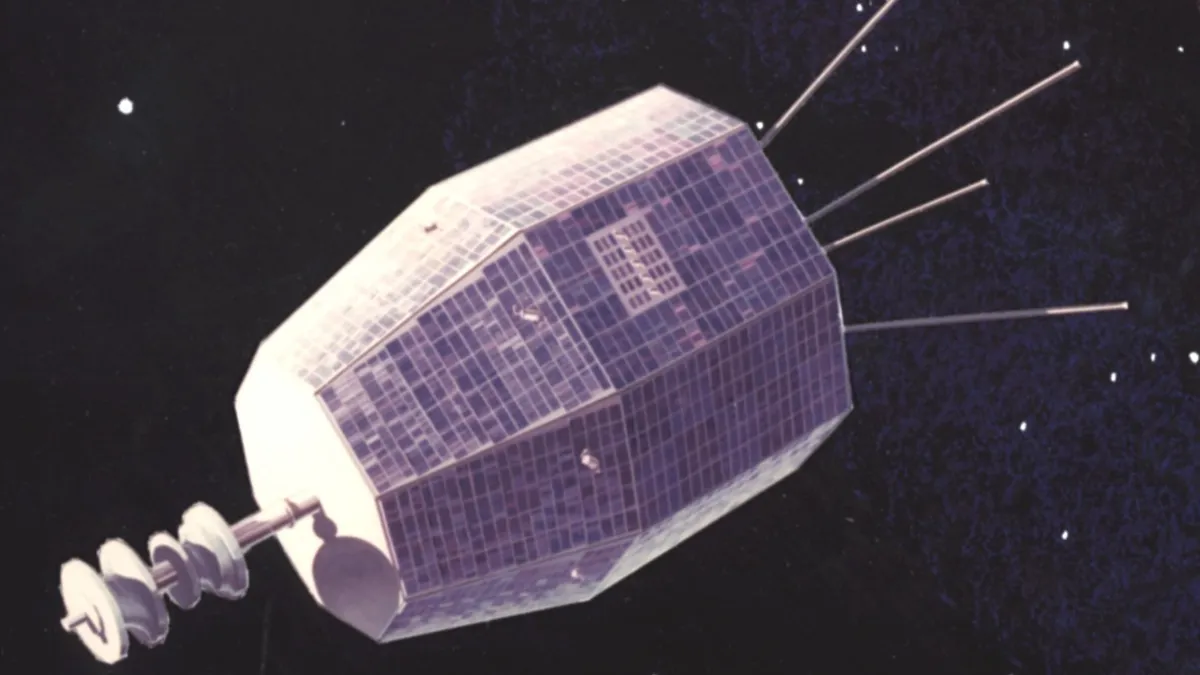
Last year, scientists made a groundbreaking discovery when they detected a mysterious and powerful burst of radio waves originating from within our galaxy. Recent analysis suggests that this unusual phenomenon may have been caused by the long-dead NASA satellite known as Relay 2. However, the exact mechanism behind this occurrence remains shrouded in uncertainty.
Launched in 1964, Relay 2 was a communication satellite that went offline just three years later, in 1967, after its two onboard transponders failed. Fast forward almost six decades to June 2024, and researchers reported an unexpected signal from Relay 2, as detailed in a recent preprint study uploaded to arXiv on June 13. This study has not yet undergone peer review, but its findings are generating considerable interest in the scientific community.
The signal detected was an incredibly powerful radio pulse that significantly outshone every other object in the sky for a brief moment. Clancy James, the lead author of the study and an associate professor at Curtin University's Institute of Radio Astronomy in Australia, explained to New Scientist that the pulse lasted only 30 nanoseconds. This duration does not correspond to any operational systems on the deceased satellite, effectively ruling out the possibility of a deliberate transmission.
James and his team propose that the burst of radio waves might have been triggered by either a micrometeorite impact or a buildup of electricity. The researchers made this discovery while utilizing the Australian Square Kilometer Array Pathfinder (ASKAP), a state-of-the-art radio telescope consisting of 36 identical dish antennae, to scan the sky for radio bursts.
Typically, radio bursts are intense emissions that can release energy comparable to what the sun produces over three days, all within a fraction of a second. While most of these bursts originate from distant galaxies, the signal intercepted in June 2024 was unique in that it came from our very own Milky Way galaxy. The proximity of the pulse to Earth posed a challenge for ASKAP, similar to how a smartphone camera may struggle to focus on nearby objects.
Initially, the researchers were excited at the prospect of discovering a new pulsar or another celestial object. However, upon tracing the origin of the radio pulse, they concluded that Relay 2 was the sole plausible source. After ruling out any onboard systems as the cause, the team suggested two alternative scenarios that could have led to the burst.
One possibility is that Relay 2 was struck by a micrometeorite. Such impacts can create clouds of plasma, which in turn increase the conductivity of the surrounding space environment or generate an electric field on the spacecraft's surface. Direct radio-frequency emissions can also arise from micrometeoroid impacts, according to the preprint.
The more likely explanation, however, is that the radio burst was the result of an electrostatic discharge (ESD) event on Relay 2. ESD occurs when electricity suddenly flows between two nearby surfaces or materials with differing electric charges. Given that Relay 2 was an early spacecraft, it may have been made from materials capable of holding a significant charge, potentially leading to more pronounced ESD events. The researchers noted that ESD has long been known to produce radio frequency pulses.
Determining the exact cause of the radio pulse remains challenging. Karen Aplin, a professor of space science and technology at the University of Bristol in the U.K., who was not part of the study, pointed out that the signals generated by both scenarios would appear remarkably similar. Despite the difficulties, she emphasized that this research serves as a valuable starting point for future investigations into electrostatic discharges from satellites.
In a world increasingly cluttered with space debris and a rise in small, low-cost satellites that may lack adequate protection from electrostatic discharges, this radio detection could offer a new method for evaluating such discharges in space. As scientists continue to unravel the mysteries of the cosmos, understanding phenomena like the unexpected radio pulse from Relay 2 may pave the way for safer and more effective space missions in the future.